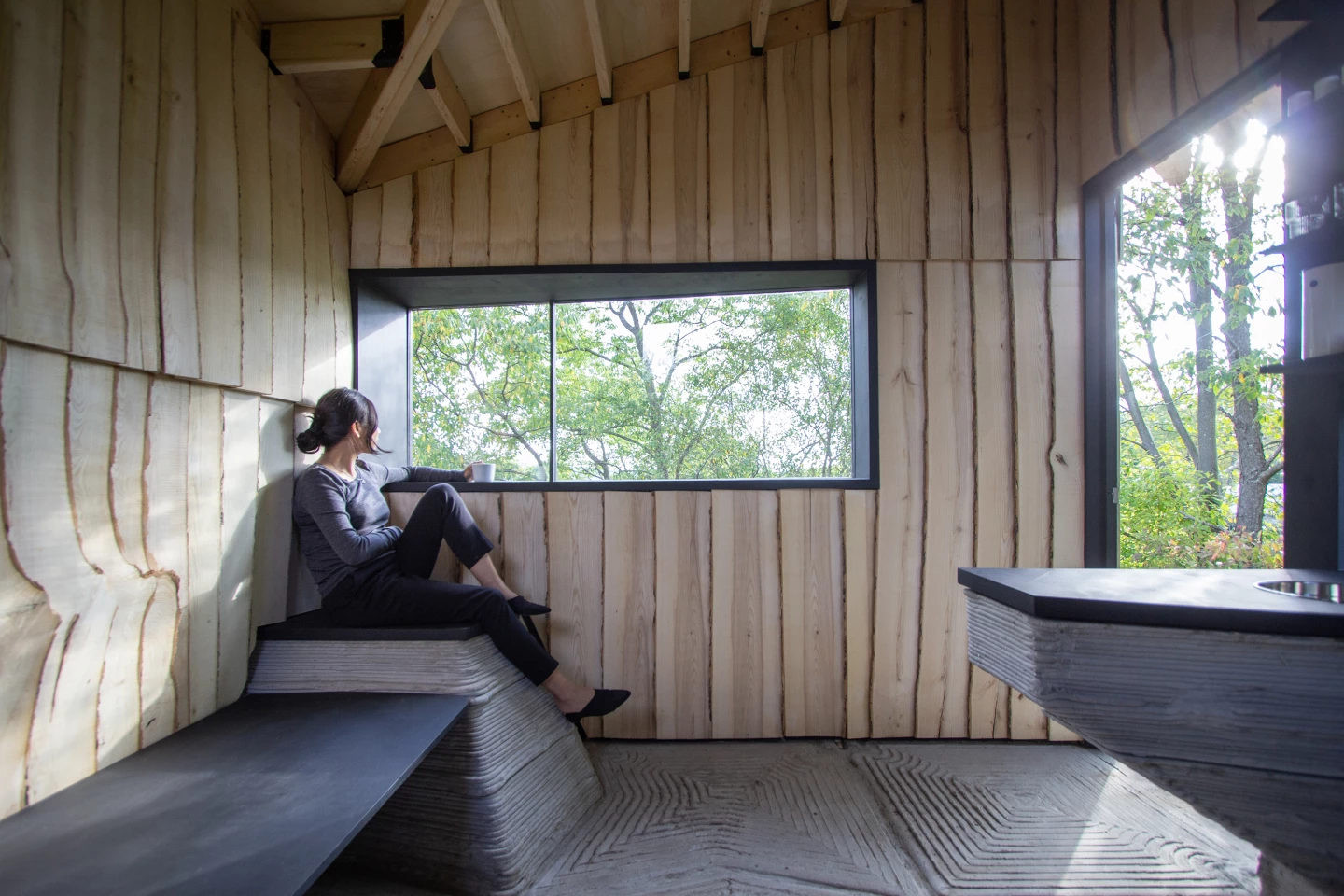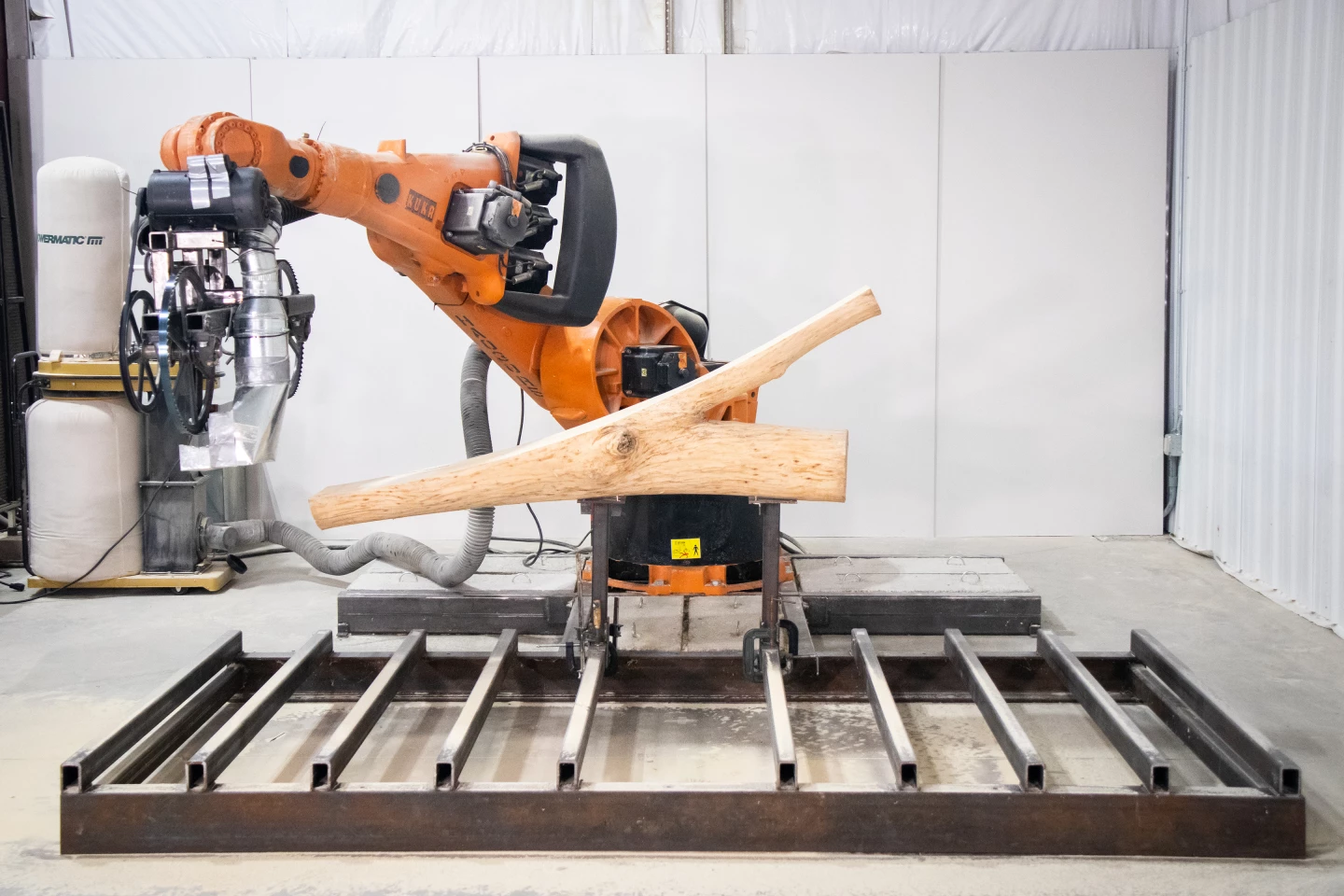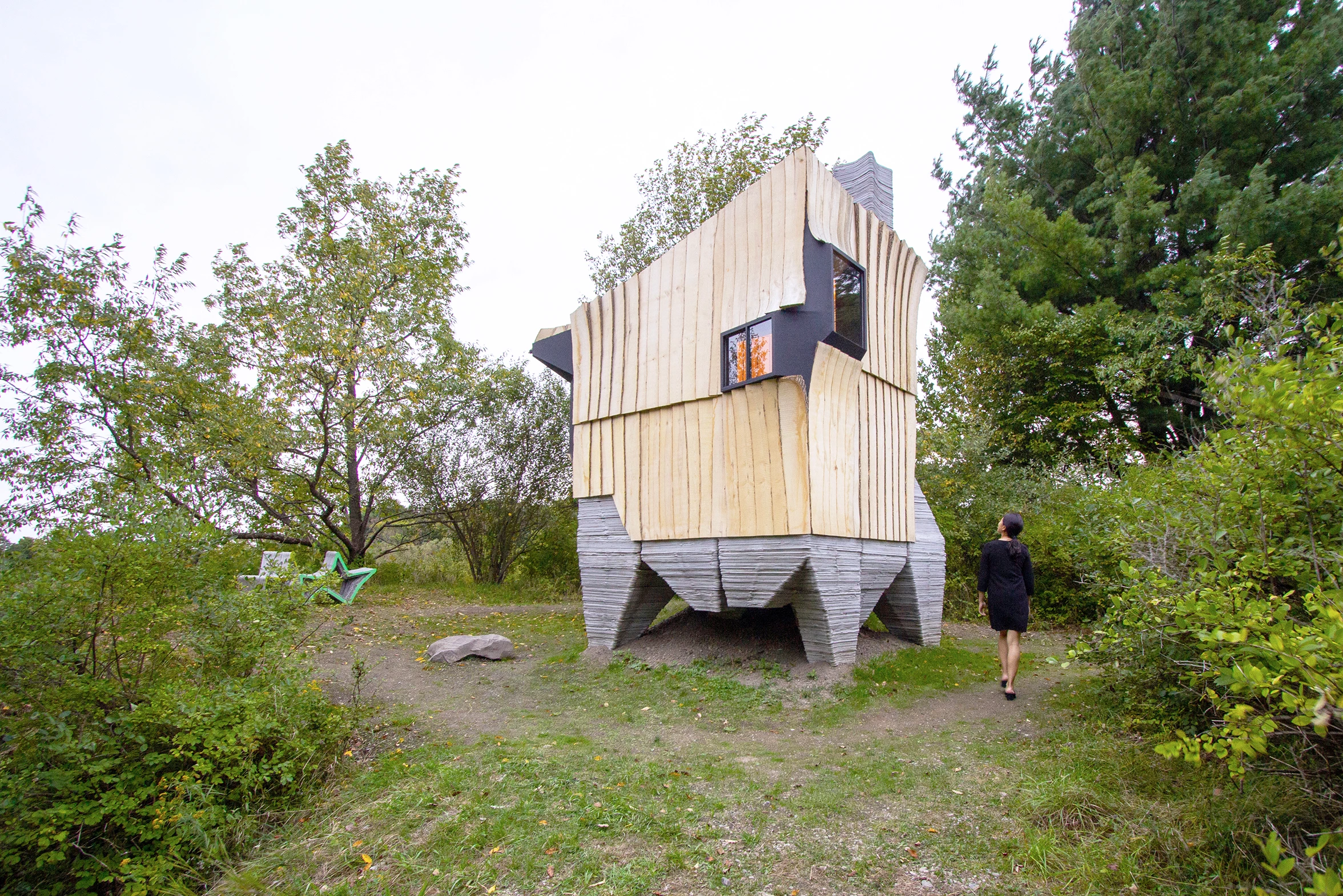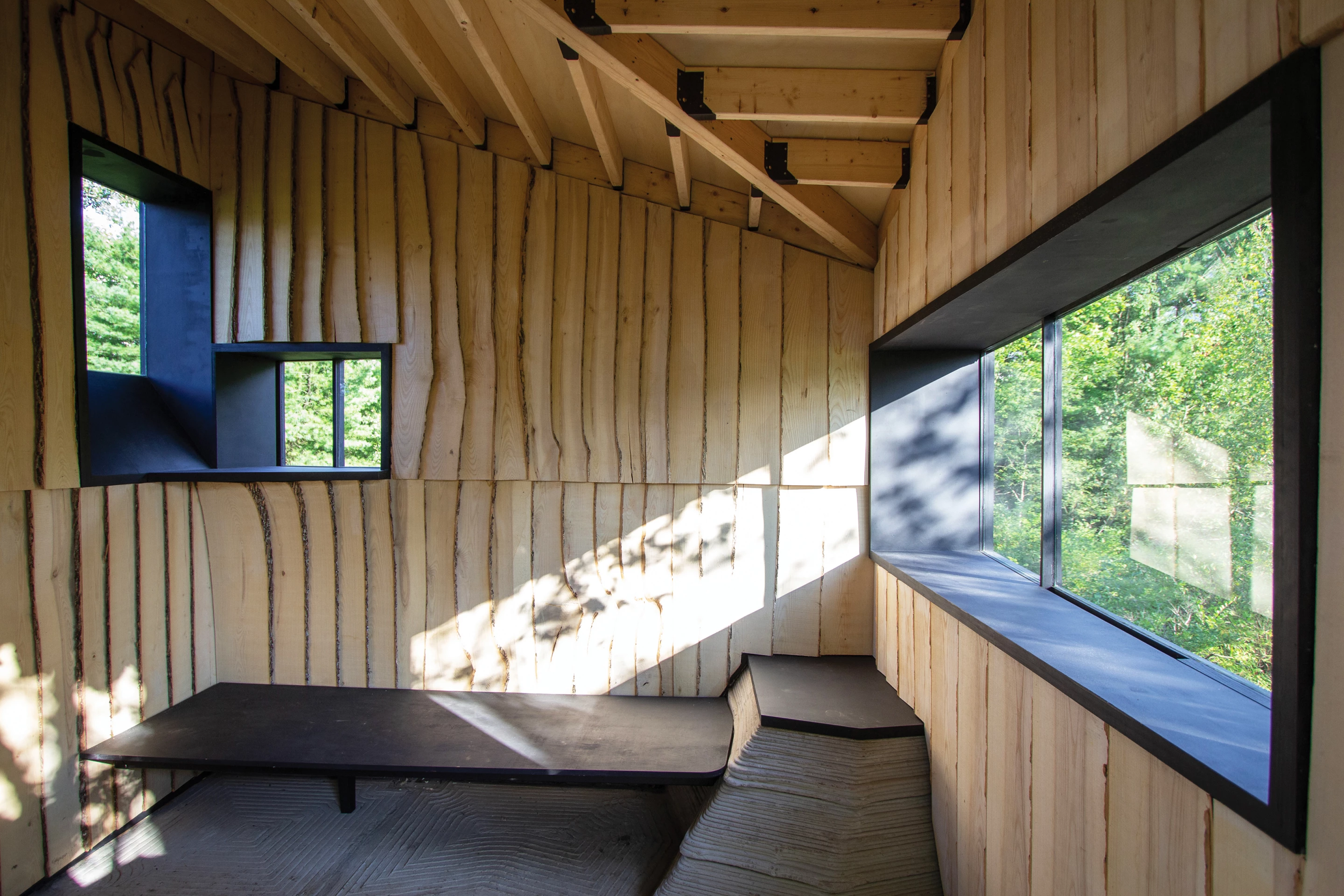With its wavy wooden exterior and concrete base, Ashen Cabin has a striking appearance, but the really interesting thing about this prototype dwelling is how it was made. Its concrete base was created with a 3D printer and the wood is beetle-damaged ash cut using a robotic arm previously used in the automotive industry.
Ashen Cabin was designed by Ithaca, New York-based architecture firm Hannah. It measures 10 x 10 ft (3 x 3 m) and its interior is very basic, consisting of just one room with a fireplace, sink, shelving, and a platform for seating or sleeping on.

The cabin's structural base, including its chimney, was built using a 3D printer that extruded a cement-like mixture out of a nozzle in layers, much like previous 3D-printed projects we've covered. The process took around two weeks and made for a very efficient build, with the minimum possible concrete used.
"The cabin was 3D printed at the Cornell Robotic Construction Laboratory (RCL) using a self-built and open-source large-scale printer," Hannah's Leslie Lok and Sasa Zivkovic, who are both Assistant Professors of Architecture at New York's Cornell University, told us.
"We built the printer at RCL from scratch with a team of students in 2016 and have refined it ever since. We developed a special technique for 3D printing, involving re-usable gravel as a support material for steep cantilevers. This enabled us to 3D print the steep cantilever 'legs' of the cabin. We developed our own concrete mixture made from off-the shelf cement and sand that can be purchased in any local hardware store."

The wood used was infected by the invasive Emerald Ash Borer beetle. Wood in that kind of state is not typically considered suitable for use by conventional sawmills as a source of lumber for home construction, says the firm.
"Infested ash trees often either decompose or are burned for energy," explains Zivkovic. "Unfortunately, both scenarios release CO2 into the atmosphere, and so the advantage to using compromised ash for construction is that is that it both binds the carbon to the earth and offsets the harvesting of more commonly used wood species."
To prepare the wood for use, Zivkovic and the RCL team modified a robotic arm purchased on eBay that was previously used to build cars for General Motors. They reprogrammed the robot and built a platform for processing irregular ash trees. The robotic arm then cut the wood into the required shapes and sizes, before the cabin was assembled with the help of students.

Looking to the future, Lok and Zivkovic hope the project will prove to be a blueprint for sustainable home construction. With this in mind, the pair aim to collaborate with the building industry, both in 3D printing and robotic timber construction, with a view to scaling up its processes toward the creation of homes and housing.
Source: Hannah










